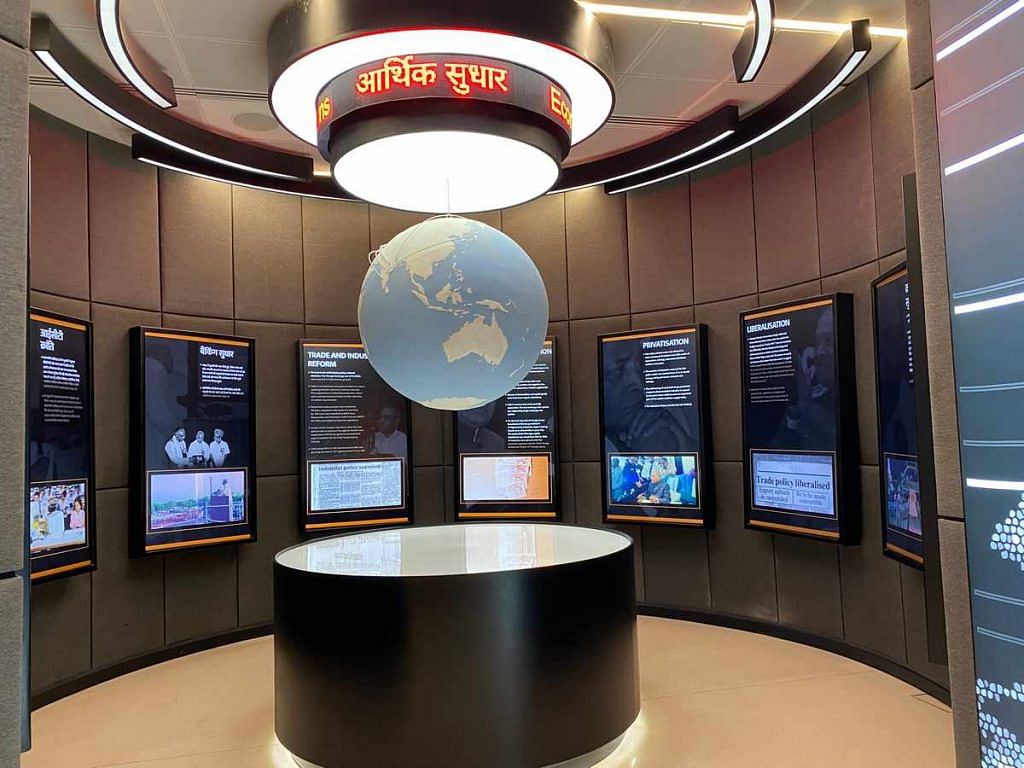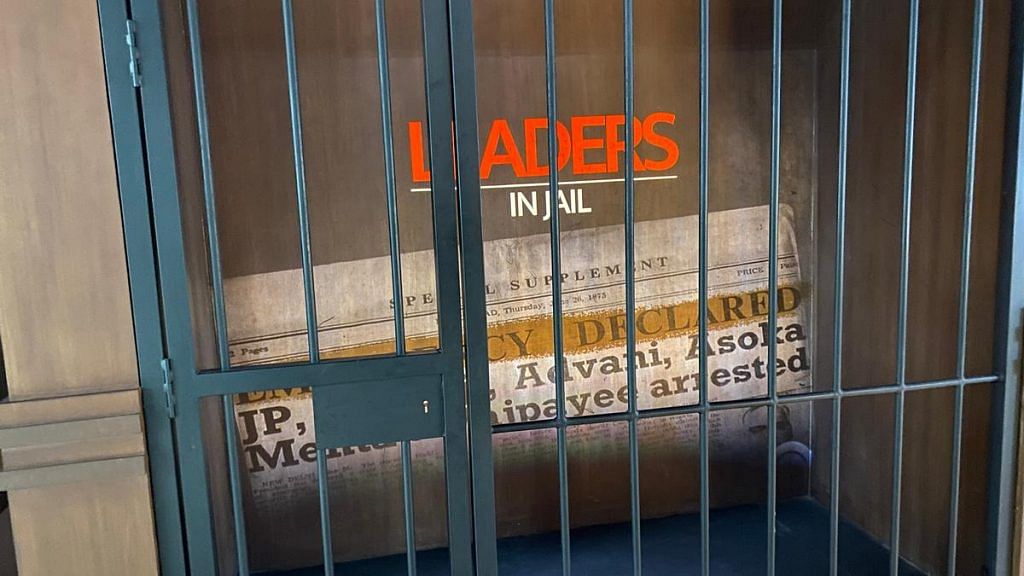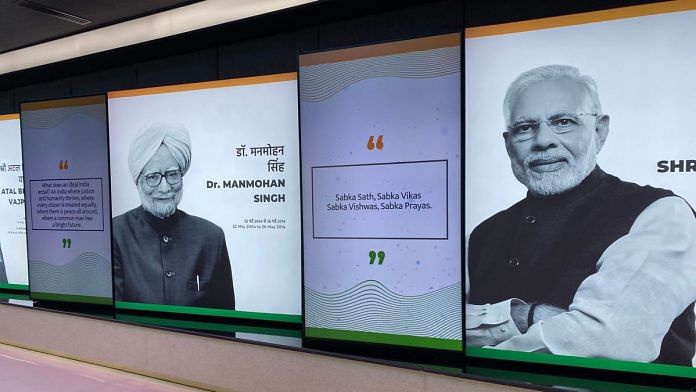New Delhi: The new Rs 271 crore Pradhan Mantri Sangrahalaya (Museum of Prime Ministers), inaugurated by Prime Minister Narendra Modi Thursday, highlights the achievements as well as the controversies that took place during the tenures of 13 former PMs of India.
The exhibits in the new “high-tech” museum include audio-visual segments on the “extra-constitutional” Emergency imposed by Indira Gandhi on 25 June 1975, the controversial Bofors deal, and bribery allegations during Rajiv Gandhi’s term as PM, and the Harshad Mehta stock market scam of 1991-92 that was a “blot” on the P.V. Narasimha Rao government.
In his inaugural address, PM Modi obliquely referred to the Emergency: “Barring a couple of exceptions, India has a proud tradition of strengthening democracy… That’s why we also have an obligation to keep strengthening democracy with our efforts.”
Do visit the Pradhanmantri Sangrahalaya and know more about all our PMs… pic.twitter.com/A8ok1Y4YFL
— Narendra Modi (@narendramodi) April 14, 2022
The Museum of PMs, which is located inside the Nehru Museum building at Teen Murti Marg in Delhi, does not have any segment on PM Modi, barring a picture of him at the beginning of the new block, where exhibits on 13 PMs, starting from Lal Bahadur Shastri and ending at Manmohan Singh, have been put on display.
A new set of exhibits on India’s first prime minister Jawaharlal Nehru has been instated in the original Block I of the Nehru Memorial Museum and Library. The additions here include a multimedia display and gifts given to Nehru by various heads of states and dignitaries
The family members of several former PMs — including Shastri, Morarji Desai, Narasimha Rao, Charan Singh, H.D. Deve Gowda, and Atal Bihari Vajpayee — attended the inauguration. However, no one from the Gandhi or Manmohan Singh families was present.
“We have sent invites to all the family members of all the former PMs,” Surya Prakash, vice-chairman, Nehru Memorial Museum and Library executive council member, told ThePrint.
A Culture Ministry official told ThePrint that Manmohan Singh had communicated that he was unable to attend due to ill-health.
Also Read: Savarkar praise by Rajnath not one-off, BJP ready to ‘correct distorted freedom struggle history’
An ‘immersive’ experience into PM tenures gone by
Two years in the making, the Pradhan Mantri Sangrahalaya uses an abundance of technology to create an “immersive” experience through virtual and augmented reality, as well as audio-visual displays and sounds.

For instance, in the section on Atal Bihari Vajpayee, a segment titled Operation Shakti showcases the Pokhran nuclear test explosion in 1998 with sound effects in the background.
The segment on Rajiv Gandhi has a multimedia display on how he introduced computers in India and ushered in the telecom revolution, the signing of the Punjab Accord, Assam Accord, the Mizo Peace Accord, and Operation Black Thunder undertaken by his government in 1986. His section also includes a multimedia exhibit on the Bhopal gas tragedy of 1984.
P.V. Narasimha Rao’s term is commemorated via exhibits related to economic liberalisation, trade, industry, and banking reforms, and the rapid strides in India’s missile programme.
It also includes an exhibit on the 1991-92 stock exchange scam in Mumbai engineered by Harshad Mehta. A line at the end of the exhibit says, “This controversy became a blot on the Rao government.”

The Vajpayee display highlights a number of important initiatives taken by his government, including the disinvestment policy, the Lahore bus journey of 1999, and contributions to the fight against terrorism. A video of Vajpayee’s speech at the UN General Assembly in Hindi is also available in this section.
Manmohan Singh’s section features the Indo-US civil nuclear energy cooperation agreement, the introduction of the unique identification scheme for families living below the poverty line, and the reorganisation of Andhra Pradesh.
Old is gold
Among the most fascinating displays are several letters to and from former PMs.
These include a letter written in 1966 by socialist leader Jayaprakash Narayan to the then Prime Minister Indira Gandhi, advocating a legal ban on cow slaughter.
In another letter he wrote to Indira Gandhi on 11 June 1976, in the middle of the Emergency, Narayan thanked her for sending money from her relief fund for a dialysis machine for his treatment, but noted that his followers had already collected Rs 3 lakh from the public.
In a letter that Morarji Desai wrote to Socialist Party leader N.G. Gorey on 27 April 1977, not long after taking charge post-Emergency, he said that though his government “has no intention to give up family planning but the method by which it will have to be implemented will be persuasion rather than by coercion.”
(Edited by Asavari Singh)
Also Read: 70 yrs ago, UP & Punjab went to polls in free India’s 1st election. Here’s what it was like



